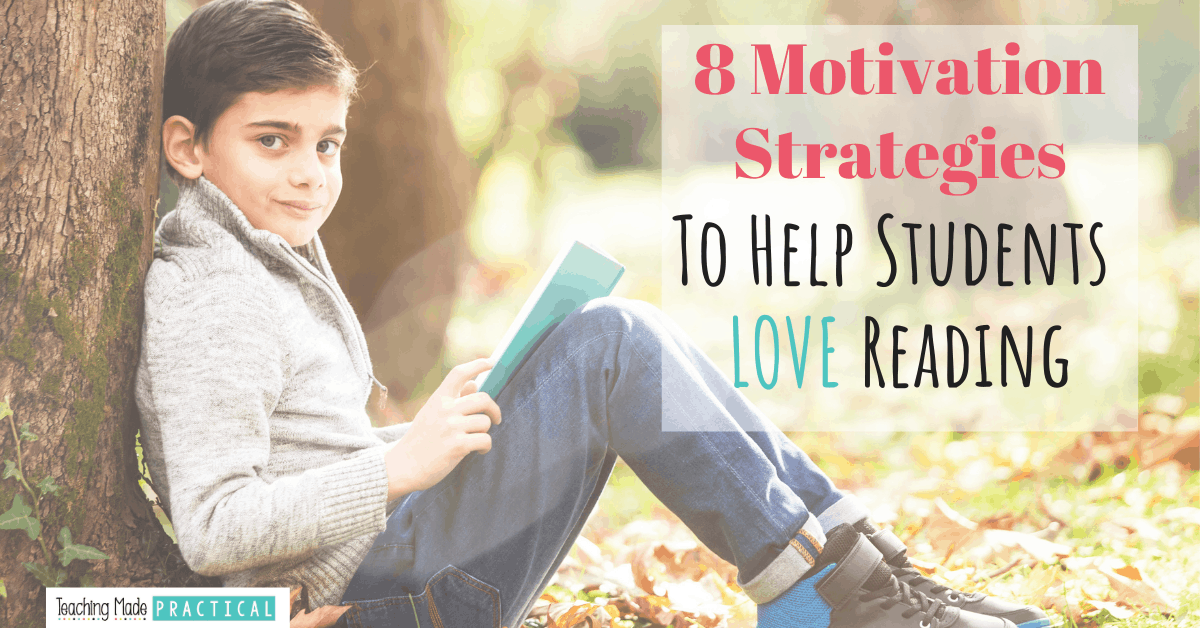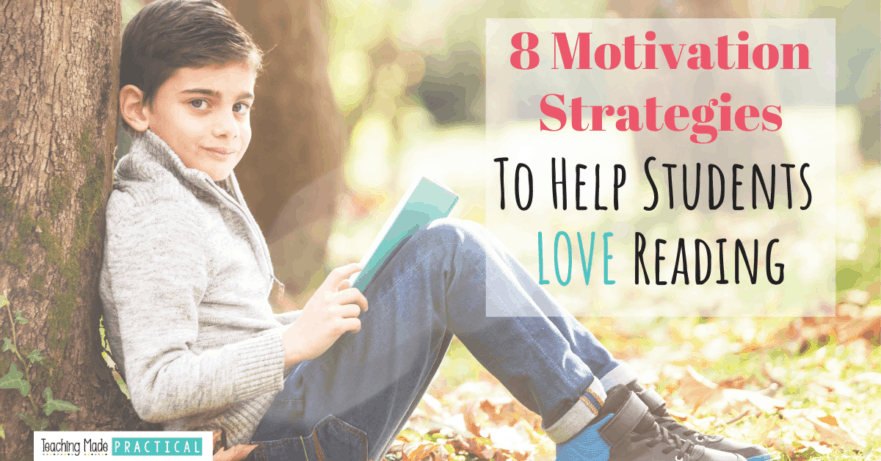
Written by guest blogger Cindy Koopmans
On last week’s exit ticket, I asked my students what they enjoy most in class. The majority of them said, “Reading my Choice book.”
That makes this reading teacher want to jump for joy.
Now in my twenty-fourth year of teaching, I’ve finally arrived at what I believe to be a winning formula for teaching the most recalcitrant fifth grader to not only pick up a book, but to actually enjoy reading a book. No moaning, whining, or complaining. Engrossed.
(Sometimes I recommend products using affiliate links. If you click through and buy, I may be compensated at no cost to you. Check out my disclosure policy here.)
I’ve gleaned lots of ideas from Donalyn Miller AKA The Book Whisperer. Others I’ve picked up from excellent teachers and wonderful workshops.
So today I’m humbly sharing my strategy with you.
Like anything you use in the classroom, you have to make it yours. You won’t do this exactly like I do it. You won’t follow Donalyn Miller’s program exactly or anyone else’s either. You will pick and choose what works for you and then once you’ve settled in and settled down, I know you will stick with it.
Here are the steps that I follow. I must say that the process is more like a square dance that a marathon. The bowing, dipping, swinging a do-si-do, and weaving in and out of patterns of behavior is a more accurate analogy. This is an art, not a science. It is a beautiful and complex journey, not a race.
1. Solve the mystery of your students’ reading life.
2. For your students’ sake, gain access to top quality children’s literature.
Books are expensive and, as you already know, teaching is not the most lucrative profession. But providing access to quality literature is an essential part of getting your students to love reading. Check out these tips for stocking your classroom library for cheap - or even free!
These book recommendations for different genres of literature might give you a jumping off point when trying to find quality literature!
3. Create a book buzz in your classroom.
4. Build your students’ metacognition skills.
I love this book: Comprehension Connections: Bridges to Strategic Reading. I honestly can’t say enough about it.
The author starts with a concrete object, like a lint roller, and uses it to help students understand complex things like how their schema works when they read.
I start with these lessons to create a language of strategic reading in my classroom. Once they understand that metacognition is a big word that simply means to think about thinking, once they understand that text + thinking = real reading and that not engaging their brain creates “word sayers” or what Tanny McGregor calls “robot readers” it is off to the races.
Now they know that they need to think about how the text connects to the schema and you’ve modeled and taught how to make inferences, now you’re having classroom discussions about what is happening in the exciting books they are reading.
The fireworks are going to start exploding. Mind blown. The fire is lit. The wildfire is burning. There’s no stopping it now.
5. Shhh...The teacher is talking with me about my book.
One on one conferring about the book the child has chosen is a critical part of getting a kid to love their book. Honestly, if you care, they will care. Write down the details of that interview. Really listen to what they say. Find a paper or digital form you enjoy using and that will make sense to you. You can find one here.
I create a schedule, typically 3-4 kiddos every school day, and try to stick to it, but it is okay to get off track. The day a child finishes a book is a teachable moment. Fitting them with a new book immediately so they have a new book to take home that night is important. There’s no lag here.
Don’t worry about missing a conference when you get a little off track because the students will tell you straight up if you have missed calling them. They love their reading conferences!
One Donalyn Miller strategy I use practically every day is called “Status of the Class.”
On busy days, when everything is going south, just giving your students time to read their book and then doing “Status of the Class” with them will make you all feel like something has been accomplished. The Status of the Class form I use is on TPT for free, but I noticed there are other versions that include other items for a few more denaro.
6. Now the kids are talking to each other about books.
I get so excited the first time I overhear a conversation between two students about the book they are reading. It happens all the time, but usually just after we are finished with our silent reading period (20-30 minutes every day...you must give them time in class). So often I suggest a quick “turn and talk” right after we end our silent reading time. You could also use some of these tips for partnering students up to talk.
- Let two or three kids read the same book and then give them time to huddle up and read together. Encourage them to sit at lunch together or give them time to sit off in a corner and compare their experiences.
- Kids who finish a book and are enthusiastic about it are encouraged to do an impromptu “Book Advertisement.” If they are stumbling around verbally or anxious about it, pull out your microphone (I just use my fist) and do an interview.
- Kids who find a great GEM are invited to write it on a card and put it in a prominent place for everyone to see and read or create a Google Slide digital GEM board.
Whichever format you choose, be sure to model what a GEM is and how to write one from your personal reading. Showcase yourself as a reader. This is a critical piece.
It’s important to remember that what constitutes a Gem to me, isn’t necessarily a Gem for you or for anyone else. It is very personal and that’s why it is so magical!
7. Set the expectations and then keep on truckin’.
You and I need to be like Miss Malarkey. She leaves no reader behind.
Tenacity is the name of the game. When do you give up on getting a child to fall in love with reading? Never.
I have a child with dyslexia this year. He must have tried out four books and every day it was the same story. He put his head down on his desk and fell asleep.
I’ve had kids with dyslexia before that had the coping strategies to read a book, but not this young man. There are degrees of dyslexia, and his struggle is extreme, not being able to tell an “8” from a “0.” On top of that, there is more going on in his brain than just the dyslexia. He’s a child of trauma.
This little guy needs the healing balm of laughter. He’s constantly joking around. Sometimes I can be a little dense, but finally I got it.
The solution was Carl Hiassen’s Flush. I found a YouTube read aloud video for every chapter. He holds the book and he listens. You know that people who are blind have extra keen hearing? Well, this boy’s listening skills are incredible. His disability has forced him to cope by becoming an excellent auditory learner. Truth is that he can’t read very well, may never be able to read very well, but he sure can remember what is read to him.
I asked him how he liked Flush after he finished listening to the first chapter. “I like it. It’s funny.”
I did the happy dance then and there. Yeah. I’m that weird.
8. Reading is life.
Don’t your students have drama in their lives? Aren’t some of them highly emotional? Do you have students who are being raised by grandparents because their mother and or father (or both) can’t handle parenting? Haven’t many of your students been traumatized in myriad other ways?
Think about it. Isn’t there comfort in reading about a character that is experiencing something they find themselves going through? We crave affirmation that this “thing” that is happening to us. Yes, it is confusing, mysterious, and enough to drive us over the edge, but the comfort comes by reading others have gone through and survived. Memoirs like Ugly and A Long Walk to Water
get that message across beautifully.
Do you know Gary Paulsen’s story? If not, read this book: Winterdance: The Fine Madness of Running the Iditarod. His childhood was abysmal.
Then get a copy of this book by Paulsen: Paintings from the Cave. It is dark, but there are some children that are living in that darkness. Simply read the foreword to Paintings From the Cave and you will get my point.
There are no silver bullets here and I’m definitely not the Lone Ranger. Sure, it would be nice to ride a white horse to school and have the good looking Tanto by my side, but that isn’t happening.
But there sure is something heroic, something that just feels right about winning even a small percentage of students over to the fact that reading is life. I can never hear those words from a parent often enough, “Before this year she never liked to read. Now she has her nose in a book all the time.”
Nothing to see here, people, nothing to see here. Just move along and keep on reading.

Never Stress Over Sub Plans Again!

Make copies, find a fiction book, and you'll be ready for any emergency that comes your way!



